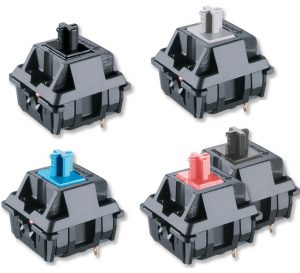Just How to Make Certain Long Life and Integrity with a High-Quality Membrane Switch
Just How to Make Certain Long Life and Integrity with a High-Quality Membrane Switch
Blog Article
Understanding the Functionality of Membrane Layer Changes for Interface Instruments
The capability of membrane switches over represents a substantial innovation in customer interface style, combining performance with visual versatility. These switches run via a multi-layered structure that translates user communications right into electrical signals, permitting both compact designs and durability against ecological factors. As markets progressively prioritize user experience, recognizing the subtleties of membrane layer switch modern technology comes to be crucial. What implications do these innovations hold for future applications, and exactly how might they redefine user interactions throughout different devices?
What Are Membrane Layer Buttons?
Membrane layer buttons are cutting-edge user interface devices that help with customer communication with digital tools. These functional components contain numerous layers, including a visuals overlay, spacer, and a published circuit layer. The layout enables a smooth assimilation into different electronic tools, boosting both the visual and functional facets of individual interfaces.
Membrane layer switches are commonly used in a variety of applications, from house appliances to commercial equipment and clinical devices. Their construction usually features a slim account, making them a suitable choice for small styles. The tactile feedback provided by these buttons can be crafted to satisfy specific customer choices, making sure effective interaction between the customer and the device.
Sturdiness is another considerable benefit of membrane buttons, as they are resistant to dirt, moisture, and chemicals, which boosts their life expectancy sought after settings. Additionally, these buttons can be customized in regards to form, size, and graphic style, enabling branding and user-specific attributes. On the whole, membrane layer switches over stand for a practical option for boosting user experience in electronic tools, combining performance with visual appeal in an effective way.
Just How Membrane Layer Switches Over Work
Operating on a straightforward principle, membrane changes make use of a split construction to register individual input effectively. Each button consists of several layers, consisting of a published circuit layer, a spacer layer, and a top visuals layer, which are made to interact perfectly. When an individual presses the leading layer, it presses the spacer layer, bringing the conductive aspects of the circuit layer right into call with each other.
This contact produces a shut circuit, indicating the gadget to carry out a certain feature. The layout enables numerous setups, including tactile feedback, which can boost the user experience by offering a physical sensation upon activation. The products utilized in membrane layer buttons frequently include flexible substrates, such as polyester or polycarbonate, which ensure resilience and resilience against wear and tear.

Trick Benefits of Membrane Layer Buttons

One more significant benefit is their compactness. Membrane layer switches are slim and light-weight, which allows manufacturers to save area in their devices without sacrificing capability. This feature is specifically useful in applications where weight and volume are important factors to consider.
Furthermore, membrane layer buttons are resistant to dirt, moisture, and chemicals, boosting their toughness. This resilience prolongs their life-span and decreases the demand for constant substitutes, resulting in price savings with time.
Moreover, the tactile responses offered by membrane layer buttons can be optimized my latest blog post to improve user interaction. They can consist of attributes such as increased buttons or audible clicks, boosting use and individual experience.
Applications Across Industries
User user interface tools making use of membrane layer switches prevail in a vast selection of markets, showcasing their flexibility and capability. Membrane Switch. In the clinical field, membrane buttons are integral to gadgets such as diagnostic devices and client surveillance systems, where their durability and convenience of cleaning are essential for maintaining health requirements. In the vehicle sector, these buttons are utilized in control panel controls and infotainment systems, providing a sleek and contemporary user interface for individuals.
Furthermore, the consumer electronic devices sector gain from membrane layer buttons in appliances and handheld tools, where portable layout and straightforward interfaces boost user experience. Industrial applications also leverage membrane changes for control panels in equipment and automation systems, stressing their effectiveness and resistance to harsh settings.
In the aerospace and protection sectors, membrane switches are utilized in cabin controls and devices, where dependability and efficiency under extreme problems are extremely important. Furthermore, the video gaming market increasingly includes membrane switches in controllers and gallery devices, contributing to an interesting individual experience. Overall, the convenience of membrane changes allows their extensive use throughout countless markets, highlighting their significance in modern-day individual interface layout.
Future Patterns in Membrane Layer Switch Technology

Additionally, the use of innovative materials, such as polycarbonate and polyester movies, is expected to climb, offering boosted sturdiness and resistance to environmental stress factors. These materials add to the total longevity of membrane switches, making them ideal for harsher industrial applications.
Furthermore, the unification of wise technology, including IoT connectivity, will enable membrane layer switches to connect with other devices and systems, promoting an extra interactive individual experience. This trend aligns with the growing demand for smart devices across different industries, from health care to customer electronic devices.
Finally, personalization alternatives are prepared for to increase, enabling makers to produce bespoke options customized to certain customer demands and choices. These growths will certainly place membrane layer switches as vital parts in the advancement of customer interface technology.
Final Thought
In conclusion, membrane changes represent a crucial advancement in individual interface technology, providing a reliable and flexible solution for varied digital applications. As improvements in material science and touch picking up technologies proceed, the capability and applicability of membrane switches are expected to increase, enhancing their significance in contemporary digital gadgets.
Report this page